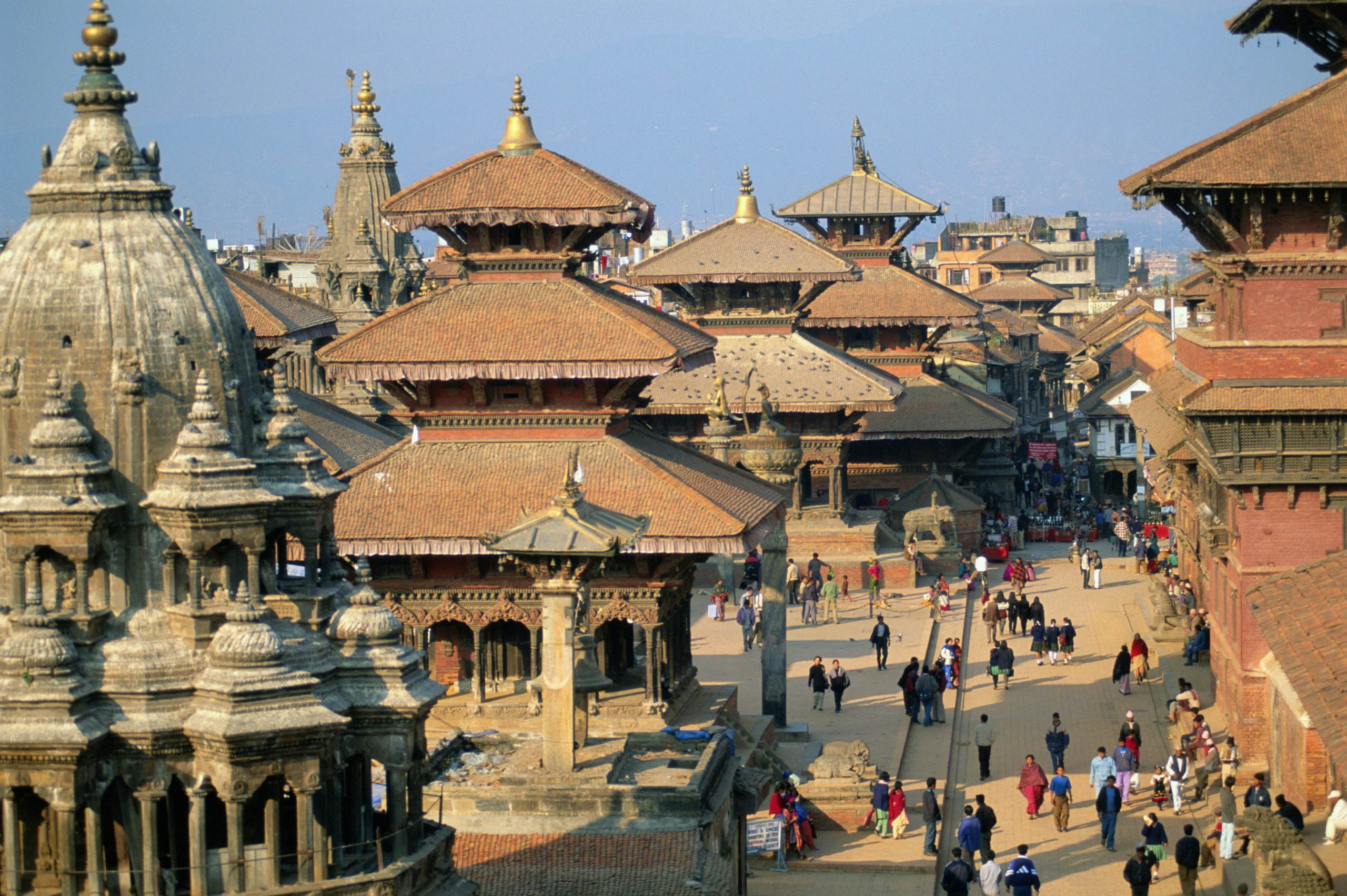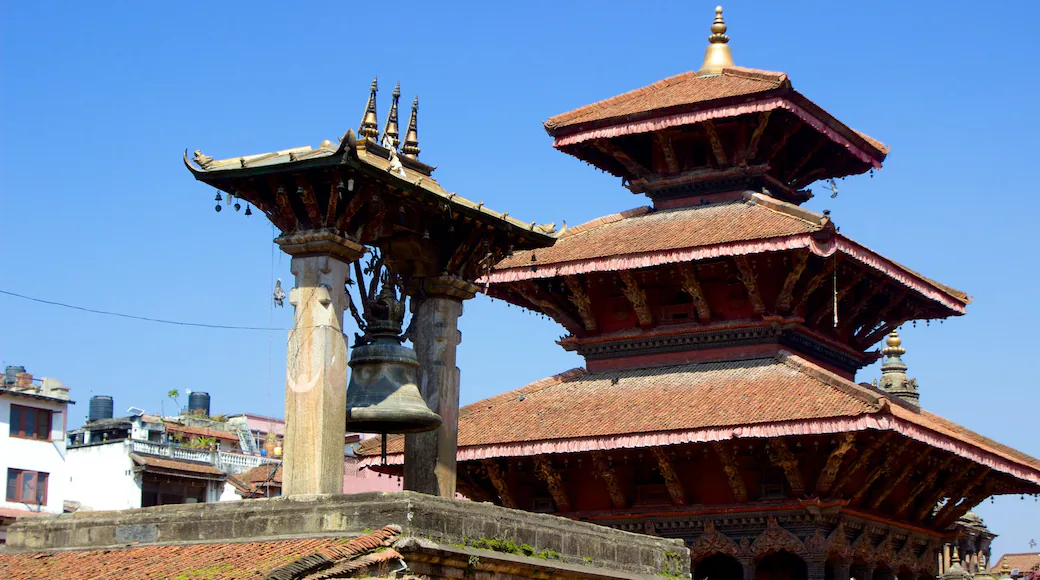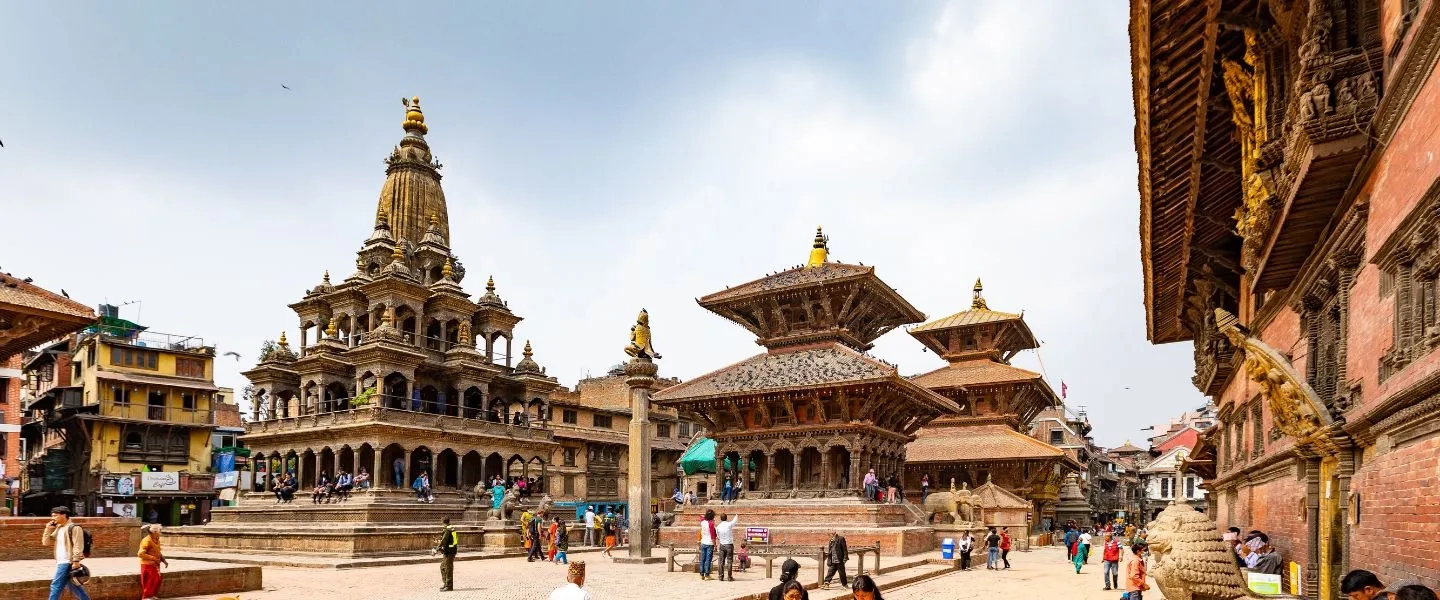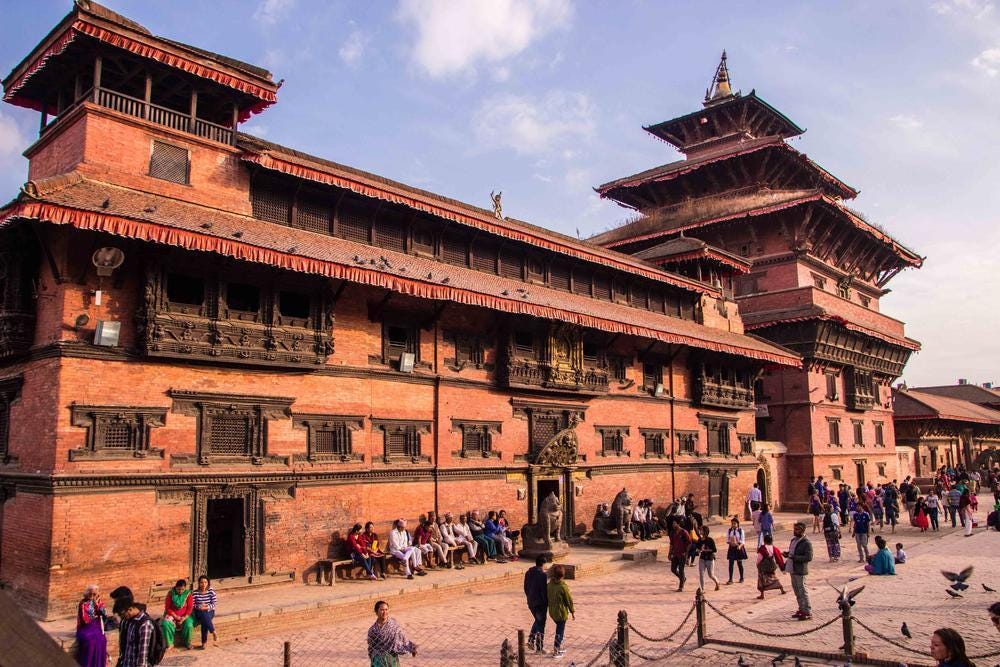One of the historical and archelogical place of Nepal, Lalitpur or known as Patan. Established in the 3rd century BC by the Kirat dynasty, Kathmandu later fell into the hands of numerous empires before becoming independent and supporting its own regional culture. Glimpse into its rich cultural heritage from the ancient monuments and detailed artwork that adorns our city walls.
The grand palaces and temples at Patan’s Durbar Square give a window to the architectural proficiency of the Malla Rulers. Over centuries, the city’s lineage reads like a patchwork of dynasties, artistic movements and religious mores that come together to define its identity.
The indigenous inhabitants of the Kathmandu Valley, the community has managed to preserve the cultural heritage of yowestogel login Patan. Their skills were clearly evident in the delicate wood carvings, intricate metalwork and pottery that adorned the city temples and buildings. Walking on the streets of Lalitpur makes you time travel to an epoch of artistry and architectural marvel. Every nook & cranny of the city has its own tale to narrate making you open a Pandora box and ignite the quest for revealing the history.
More than just a legacy of the past, Patan is a thriving and continuously evolving entity of living heritage. The inhabitant of the city, who knows how to cherish their traditions and customs inherent in his roots, will pass on the spirit of Inspiration with heartwarming transparency down through the generations.
It builds from spiritual traditions to social conventions and the humdrum of Patan here pulsates with history in an almost recognizable way. A trip through the historical relevance of Patan is akin to going back and forth in time where the contemporary era meets the yester years and this from a period so old, but still resonates with the world today.

Cultural Attractions in Patan
One must give Patan more than a glance and look beyond at the well known heritage elements to perceive it as an alive and breathing cultural hub it is with people who are artists. From the city’s museums, galleries and performance spaces you too will draw a lesson of the creative spirit of Nepal.
Patan Museum, located in a classic renovated palace: this museum has an astonishing collection of religious art sumptuous pieces of sculpture and artifacts for deeper understanding of the region’s spiritual trends. From images hundreds of years old, the exhibits at the museum show how Nepalese art and skills have evolved over the centuries.
Patan- Music, Dance and TheaterOne of the most culturally vibrant cities in Nepal, Patan is loaded with more than just architectural wonders. The city has its fair share of cultural events, from classical music concerts to folk dance performances. The pulsating street festivals like Rato Machhindranath Jatra are window to vibrant hues of Nepalese traditions Besides the museums and theaters, the cultural attractions in Lalitpur include its vibrant bazaars displaying weavers, potters and metal craftsmen.
Rich Newar culture defines every aspect of life in Lalitpur, with its elaborate rituals and ceremonies. From the hallowed processions during religious festivals to the elaborate wedding ceremonies, the city throbs with a sense of cultural grandeur that is both infectious and enveloping. To stop by the cultural wonders of Lalitpur welcomes you to under-the-skin Nepalese traditions-a land where yesteryear and today snuggles innocently in the lap of art, spiritualism and community.
Architecture and Art in Patan
The architectural heritage of Lalitpur is an ensemble of the most intricate detail, graceful curves and timeless beauty The temples, pagodas and palaces of the city are masterpieces of Newa architecture, featuring intricate details as woodcarvings and openwork windows fulll beautiful displays. The Golden Temple, boasting the gilded roofs and elaborating woodwork, stands as a pinnacle of the artistry Patan is capable of. The city’s courtyard life, imbued with stone sculpture and metal craft is like an outdoor art-deco museum of contemplation and enchanting.
Patan’s art is not confined within the walls of its buildings; it suffuses all aspects of their daily living mode. The streets of the city are already full of structures on which people worship, galleries to display their artwork and graffiti in all its forms. Patan is a bountiful city with artistic expressions scattered all over from the vibrant thangka paintings to the delicate metal crafts. Its craftsmen, masters in their craft like no other, carrying forward the culture and making timeless designs with a contemporary edge.
The architecture and art of Patan is not only a visual delight but epitome of cultural heritage and spiritual aspiration. The city’s many shrines, detailed carvings, and holy inspiration reflect the tradition-innovation balance of Newar art. Architecture has started turning into concrete skeletons, and arts have grown as fossils but Lalitpur is the place where you still feel like being in Nepal in the sense of Beauty and Spirituality lives within a harmony.

Famous Landmarks in Patan
All thanks to the rich history that lies within Lalitpur is a treasure trove of some very well-known landmarks that are witness to its glorious past and the colourful present. Patan Durbar Square, a UNESCO World Heritage Site and the city’s piece de resistance, is a spectacular assembly of palaces, temples and stupahs with origins that go back to the Malla period. The centre of the square, symbol of Siddhidal temple and Styamohan building Math house; significantly fine wood carving windows, golden faced pagoda temples – use to be architecture excellence during the reign Malla period.
Another notable monument in Lalitpur is the Krishna Mandir, a stone temple dedicated to Lord Krishna which was built in the traditional shikara style of architecture. For all the art and history lovers out there, it is an unmissable site with its 21 gilded pinnacles and brew intricate carvings. It is an unforgettable tribute to 1000 Buddhas standing along its terracotta front built by the limestone bricks that are locally used. Yet these monuments are more than just the relics of a bygone era, they are a testament to Patan’s enduring spirit and heritage.
Patan’s most notable sites include more than just its Durbar Square; many other temples and palaces are scattered throughout its environs as well. Ashoka Stupa is a perfect hideout and Swoyambhunath temple the most ancient stupa of Nepal which allows one to experience peace amidst a busy city.
The Buddhist monastery is a spiritual nest which would also lead you through the spiritual enlightenment of Sikkim and its surroundings. Discovering the well-known monuments of Lalitpur is like taking a hop on a time machine, where strings of those bygone eras still run ringing in the present – exciting you to uncover the myths of this city.
Patan Specialities And Feel Local Food
The culinary scene of Lalitpur is a confluence of delicious flavors, varied textures and distinctive aromas that showcase the city’s rich cultural legacy. Local gastronomy shines too – richly-spiced Newari cooking is a stand-out with bold flavors. Lalitpur is a foodie haven but its Newari feast includingbara, chatamari and yomari are real eye-openers as are street snacks such assel roti and wo.
In town, you will find teahouses, cafes, and eateries conveniently offering a diverse choice of traditional and contemporary menus to satisfy almost any palette. Lalitpur also happens to be a pretty good place to eat the local Newari cuisine – whether your calling is for a bowl of piping-hot samay baji or a plate filled with succulent momos. There are crowded markets such as Mangal Bazaar and Mahabouddha with numerous options for food freak to dig in and try local food, sweets, snacks, etc.
The food in Patan is not just food; it is a part of their sense of community, tradition, etc. Sharing a meal, whether in a local eatery, or at the table of a traditional Newari house is a hallowed rite of togetherness. Food festivals of the city include street festivals and celebrations during feasts, which may occur around harvest time.
Moreover, the first food which you should not miss eating in Lalitpur will definitely add a charm in its own ways by also taking you to explore local cuisine or so I can say that exploring food at Patan is something culinary but into the cultural immersion through which one can take a warmth of Nepalese food and hospitality residing around.
Patan Traditional Festivals and Celebrations
Lalitpur: A city of festivals celebrates the rich tapestry of traditions and festivals, old and new coming together to create a riot of colours an elan. Religious Festivals, Cultural Activities, and Fraternization for the Holy Name of the Lord are observed throughout the year 🙂 The Indra Jatra festival, happening each September, is a major event with processions, masked dances and music in honor of the rain god Indra.
One of Patan’s most important festivals is the Rato Machhindranath Jatra- also known as the chariot festival. UNESCO describes the month-long spring festival that involves dragging a huge chariot with the deity of Rato Machhindranath through the streets of the city. This holy festival consisting of feasting, dancing, and merrymaking brings everyone from locals to visitors together for the celebration of the monsoon season.
The festivals of Lalitpur are not limited to religious rituals but are also the cultural expression of a rich tradition and heritage of the city. A festival to celebrate womanhood and sisterhood, Teej is dedicated to Parvati, a wife of Shiva on which she had undertaken an intense fasting and prayer for his well-being.
The city also celebrates Nepal Sambat: a festive New Year’s tradition following rituals amid much fanfare and anthems cheering arrival of a new decade. Patan’s traditional festivals and celebrations are a way of delving into the heart of Nepalese culture, where ancient customs brush shoulders with 21st century celebrating in an explosion of colour and feeling.

Shopping and Handicrafts in Lalitpur
SHOP IN PATANPatan is a shoppers’ delight with an array of handicrafts, textiles and souvenirs that bear testimony to the artistic heritage of the city. Bazaars and Markets in the city are vibrating with a stunning range of Handicrafts right from metal grandeur to pottery finesse. Get transported to our local artisans weaving, carving and painting in the quaint Mangal Bazaar, which sees as much hustle and bustle today.
HandicraftThe well known products of Lalitpur handcraft are not only popular in local market but international market too, that is why for such unique treasure people visit Patan their place. Some of the city’s best thangka paintings (silk or cotton works) are said to reside here, with their intricate patterns, detail and spiritual worth. These handmade paper products can also serve as eco-friendly mementos that you can take home for friends or loved ones, like lokta paper notebooks and cards.
Trace of Patan’s unique metalwork and ornamentation heritage is presented in the form of its silver and gold designs here at the city’s Jewelry Shops. The Patan born Thanka School offers traditional art education and preservation to train students in the ancient crafts of thangka painting and sculpture. Walking the streets for shopping and handicrafts in Patan is like wandering into two thousand years of artisanal traditionshandicrafts in a once buddhist city were all the wonderful arts flourished!
Places to Stay in Lalitpur
Where to Stay in Patan for Comfort, Convenience & Culture These boutique hotels, guesthouses and homestays in the city offer an experience of Newar hospitality that is second to none. Cosy guesthouses have been fashioned out of the traditional Newari homes, offering a window into local life and customs.
Patan has that whole boutique hotels thing down, with stylishly designed rooms and modern touches for those looking luxury and comfort. A number of these hotels can be found in historic buildings, where tradition is given a modern appeal. Located in Patan, the homestay provides a real insight into life with local families, opportunities to learn traditional cultural activities and enjoy home-cooked meals made with passion.
From a peaceful retreat in the countryside to a vibrant sidetrack from the hustle and bustle of the city center, Lalitpur has accommodation to suit every budget and preference. Heritage hotels in the city – such as Traditional Homes Swotha and Inn Patan – give you a sense of how the Malla rulers once lived. Visiting the accommodations in Lalitpur- a city is never just about finding a soft pillow to lay your head on for the night but it is also an opportunity to be embraced by the overwhelmingly comforting yet warm Nepalese way of life.
The end: Looking at Patan (Lalitpur)
So in conclusion, Patan (Lalitpur) is one of the unique city where history, art and culture comes together and create beautifully woven tapestry. Lalitpur is a well-preserved living city, and one of the most culturally vibrant places in the valley; it boasts many ancient temples and palaces, has a medieval street plan and is particularly famous for its arts and crafts. Must Read: Top 5 Reasons Why You Should Visit Bhaktapur, City of Culture in Nepal for the Authentic Nepalese Experience | Cultural and Heritage Trove! If you like reading this aritcle then please consider reading our article about Jelly Ball.

